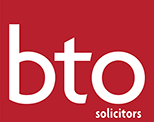03 June 2024
Intellectual property, as with other forms of property, is an asset which should be protected and can be exploited. For charities, the notion of ‘commercialising’ assets may be perceived to be at odds with their charitable purpose. However, intellectual property rights are intrinsic to brand recognition and protection, which may in turn impact donations and funding. As such, charities are encouraged to think about intellectual property in the same way as commercial, for-profit entities – namely, as an asset which they ought to protect and on which they may wish to capitalise.
Below, we summarise three types of intellectual property and the ways in which these are likely to be relevant to organisations within the charitable sector:
1. Trade marks
|
|
Trade marks are ‘signs’ (usually words or logos) that are capable of distinguishing the goods or services of one business from those of other and indeed for some companies, may be their most valuable commercial asset. Some famous trade marks include Coca-Cola (reported to be worth $74 billion), Nike (reported to be worth $34 billion) and the McDonald’s logo, recognised by consumers globally.
A key benefit of having a registered trade mark is that the owner of that trade mark then has exclusive rights to use the word or logo – for example, to create branded merchandise or to license the word or logo to a third party – as well as the right to seek to prevent competitors from registering and using words or logos which are the same as (or confusingly similar to) the ones already registered. This is important within the charitable sector, which relies on “brand” recognition to secure donations and where confusion amongst members of the public may result in inadvertent donations to the wrong charity.
If there is no registered trade mark, the law of passing off may apply. To establish passing off, the entity seeking to do so would require to demonstrate that it: i) is the owner of goodwill (i.e., that it has a base of customers or donors); ii) the competitor had made misrepresentations leading to deception or a likelihood of deception (i.e., the similarities are such that the customers or donors would be deceived); and iii) the misrepresentations had caused damage (i.e., there has been a financial loss or reputational damage, or both – this might involve proving, for example, that a donor has inadvertently made a substantial donation to a rival charity, due to confusion). It should be noted though that the law of passing off is far from straightforward, and can generally be avoided if words and logos are protected as trade marks.
Protecting the charity’s name or logo may also be useful within the context of commercial partnerships (for example, where a charity is working with a commercial business to raise funds, and the charity wishes to allow the business to utilise its name or logo on promotional products in exchange for a payment or royalty arrangement). It is worth noting though that such arrangements require to be carefully drafted to ensure that both parties are clear when, why and to what extent the charity’s name or logo may be used.
In terms of practical steps, charities are encouraged to seek to register their name and logo at their inception, or failing which as soon as practicably possible thereafter, to ensure that this core asset is adequately protected as the charity grows in reputation and value.
2. Patents
A patent is essentially a monopoly right over the commercial exploitation of an invention (for example, a new medicine or piece of industrial equipment). Patents are typically granted for a specific period of time (the starting point is 20 years, although this can be extended in certain circumstances).
Within the charitable sector, patents may have relevance within the context of PhD funding. It is not uncommon for charities to provide funding / grant money to PhD students. For example, the London based Wellcome Trust funds researchers to “take on important questions relating to life, health and wellbeing” and one of its charitable aims is to spend £16 billion by 2032 to advance scientific discovery. Similarly, the Leverhulme Trust overs grants up to £500,000 to researchers based at universities, institutions of higher education or registered charities with university-equivalent research capacity to “undertake an innovative and original research product”.
Who, then, owns any intellectual output and what happens if a researcher develops a groundbreaking pharmaceutical product as a result (at least partially) of research facilitated by a charitable grant? This is a critical question for charities who need to think about who owns that intellectual output and, perhaps more so, who owns any patent generated off the back of it. The difference between owning patents or not can mean the difference between millions (or potentially more) pounds. For a charitable organisation, this could make all the difference to achieving its goals. Of course, there is a delicate balance to be struck between meeting charitable objectives and advancing the social aims of the charity and securing funds to continue that work. However, patents can also be licensed or sold for significant sums of money (for example, it has been reported that Kodak sold its portfolio of patents for over $500 million) and they are an important factor to consider in securing long term financing of charitable work.
As such, charities engaged in the awarding of research grants should think carefully about the terms of any agreements with grant recipients, so that ownership of the intellectual property is appropriately dealt with and the charity (and its investment) is adequately protected.
3. Copyright
Copyright is a legal right that subsists in original literary, dramatic, musical and artistic work; original non-literary written work (including software, web content and databases); sound and music recordings; film and television recordings; broadcasts; and the layout of published editions of written, dramatic and musical works.
Copyright normally vests in the author of the work, unless the work is created during the course of employment in which case the starting point is that copyright vests in the employer. This is straightforward if the relationship is a traditional employer / employee relationship. If however a charity is engaging a consultant or freelancer to assist in the creation of charity materials (for example, leaflets and circulars), it will need to think carefully about who owns the copyright and ensure that this is dealt with at the outset of any arrangement with such parties.
Copyright may also become relevant within the context of fundraising campaigns and promotional materials – if for example the charity has engaged a creative agency or production company to prepare a promotional film, the terms of agreement with the agency / company will need to address ownership of intellectual property in whatever content is created.
It is also worth noting that in addition to these three types of intellectual property, charities should also be aware of potential intellectual property rights in databases (which can be covered by copyright but also have their own sui generis rights, in terms of which the materials in the database are themselves potentially protected) and also of the potential value in confidential information / trade secrets, which are typically protected by way of confidentiality agreements or Non-Disclosure Agreements.
Looking ahead: protect, record and exploit
Charities are encouraged to think carefully about intellectual property as part of their portfolios of assets and to take steps to protect those assets. As a starting point, charities should seek to:
i) trade mark their names and logos;
ii) make a list of registered trade marks, grants awarded, and relevant commercial collaborations; and
iii) consider the intellectual property implications of any agreements into which they enter (this would include amongst other things grant awards, merchandising and licensing agreements, sponsorship agreements, and agreements with freelancers, consultants and agencies.
These initial and straightforward steps will go some way to streamlining matters in the event of potential intellectual property infringement and make it easier for charities to ensure they are adequately capitalising their assets, which will in turn benefit the organisation and further its charitable goals.
Lauren McFarlane, Associate: lmf@bto.co.uk / 0131 222 2939



